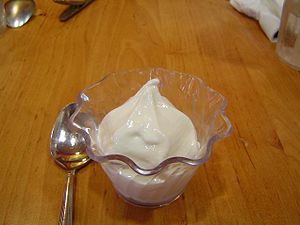You can barely turn on the TV without seeing an ad for some new brand of Greek Yogurt. These ads may have you wondering, when did the Greeks start making yogurt and why is everyone so excited about it? Let’s start by looking at why Greek yogurt is different than regular yogurt.
What’s the Difference?
If you have never eaten a spoonful of Greek yogurt, it would be easy to wonder how these two types of yogurt are different. But it only takes one bite to see what is behind the Greek yogurt craze. The biggest difference is the texture. Regular yogurt has a light, almost airy texture whereas Greek yogurt is thick, rich, and creamy. The best way to describe it is somewhere between thick pudding and soft, spreadable cheese. It feels more substantial than the regular kind of yogurt without losing the distinctive flavor of yogurt.
Both types of yogurt are made using the same ingredients and with the same basic process. All Greek yogurt starts out as regular yogurt but goes through one additional step before it is complete. To get the distinctive thick, creamy texture, the yogurt is strained through cheesecloth or another filter to remove most of the whey. The longer the yogurt is strained, the thicker the end result will be.
Are There Nutritional Differences?
The difference in processing does result in some differences in nutritional content. Removing the whey from Greek yogurt means that a serving has less sugar and more protein than regular yogurt, but also that it contains less calcium and more cholesterol. Comparing the two types side by side provides a good picture of where they differ nutritionally. A 5.3 ounce serving of plain, non-fat Greek yogurt and a 6 ounce serving of plain, non-fat regular yogurt both contain 80 calories and 0 grams of fat. Greek yogurt contains less sodium and sugar, containing 50 mg of sodium and 6 grams of sugar compared to the 120 mg of sodium and 9 grams of sugar in regular yogurt. However, regular yogurt only contains 5 mg of cholesterol which is half as much as found in a serving of Greek yogurt and provides twice the amount of calcium for the same size serving. Lastly, a serving of Greek yogurt provides 15 grams of protein as opposed to the 9 grams of protein found in regular yogurt.
Which is Better?
Both types of yogurt can be a part of a healthy diet and which is better for you really depends on your own dietary preferences. If you are looking for a creamy treat to replace ice cream or dip or are looking to lower your sodium and sugar intake, Greek yogurt can be a great option. If you are watching your dietary cholesterol intake or looking for a way to get more calcium, regular yogurt may be the option for you. Either way, eating yogurt has real health benefits over and above its nutritional content. A study from Harvard published in the New England Journal of Medicine in 2011 showed that eating yogurt as part of your regular diet can actually help you maintain your weight over time.
Here in Arizona, our Arizona dairies lead the way in helping us produce some of the finest Greek yogurt around. Check out our dairy videos to learn more about our local Arizona dairies and the farmers who run them.
Related articles
- Stressed Out? Try Yogurt (fillyourplate.org)
- How to Build a Better Breakfast (fillyourplate.org)
- 3 Tips to Help Start Your Day the Healthy Way (fillyourplate.org)


